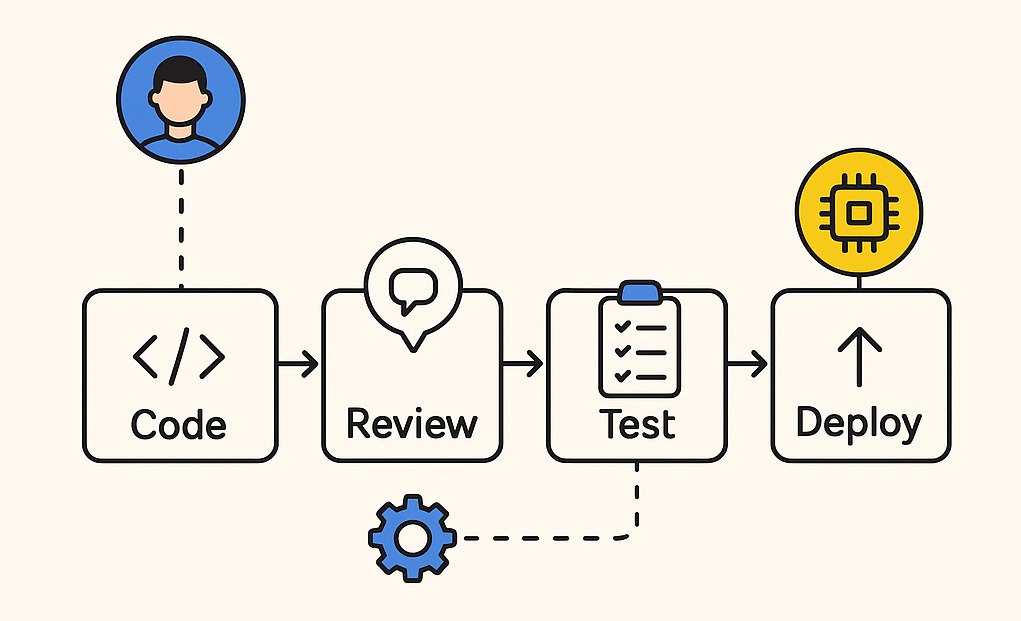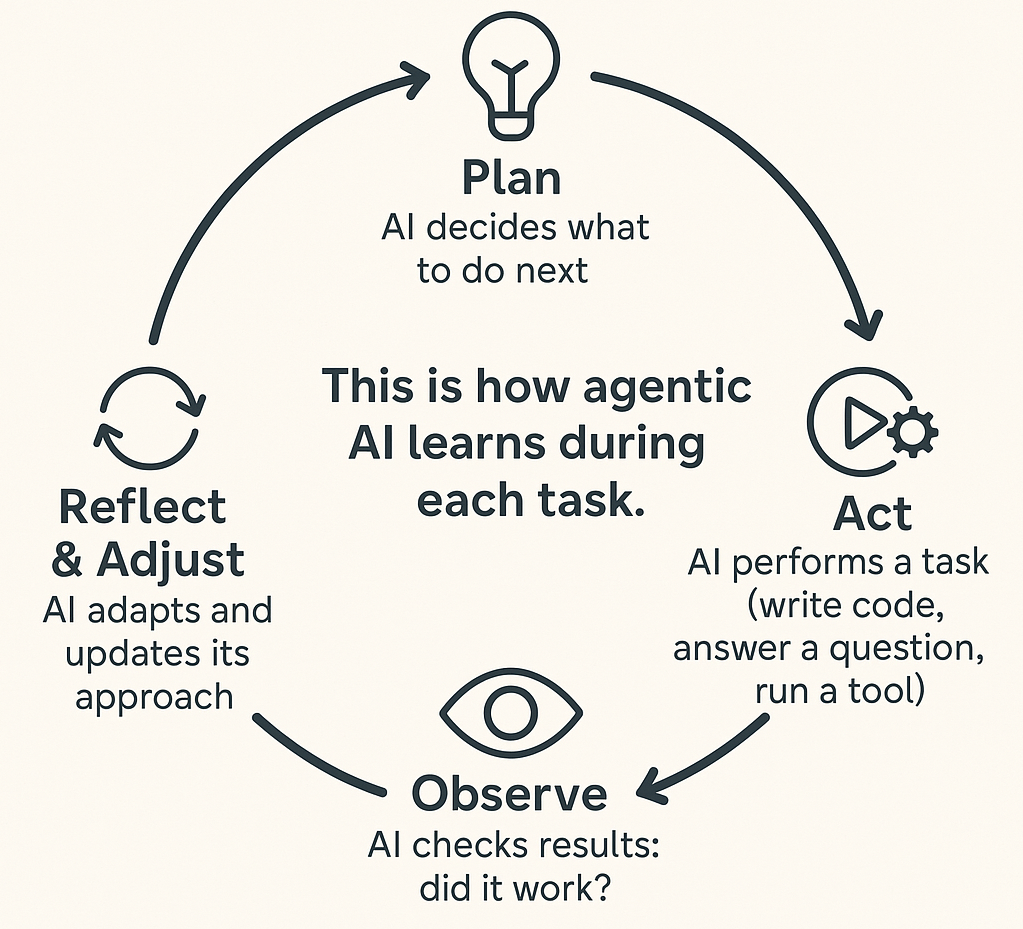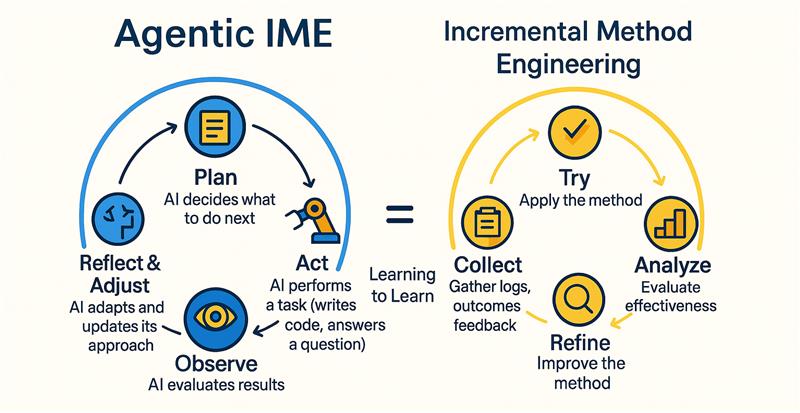Every software team today is asking: how can we build smarter, faster, and safer systems? The answer often lies not just in tools, but in the ways we organize and improve our work. Imagine hiring an intern. At first, you micromanage every step. But over time, they learn shortcuts, ask for feedback, and improve not just their work but the way work gets done. This is where concepts like workflow, agentic workflow, and method engineering come together—culminating in something new and exciting: Agentic Incremental Method Engineering (Agentic IME).
What is a “Workflow” in Software Engineering?
At its simplest, workflow generally refers to an orchestrated sequence of tasks or activities carried out to achieve a specific outcome, often involving multiple participants and tools. Authoritative sources often define workflow in the context of computerized process management. For example, the Workflow Management Coalition (WfMC) defines a workflow as “the automation of a business process, in whole or part, during which documents, information or tasks are passed from one participant to another for action, according to a set of procedural rules.” Think of it as a digital assembly line: code is written, reviewed, tested, and deployed, often supported by automation and coordination tools.
Key aspects of workflows include:
- Sequence of tasks (what comes first, what follows)
- Actors (developers, testers, or automated systems)
- Tools and automation (CI/CD pipelines, testing frameworks)
- Rules and constraints (branching, approvals, or quality gates)
Workflows make work repeatable and reliable but they are usually rigid.

What Makes a Workflow “Agentic”?
But here’s the twist: what if workflows themselves could think, adapt, and even improve over time?
In the context of software engineering and generative AI, an agentic workflow is a structured but adaptive process in which one or more autonomous AI agents (typically powered by large language models or related models) plan, reason, and act to advance tasks or goals with minimal human intervention. The workflow dynamically adapts to context, intermediate outcomes, and feedback, forming a closed-loop system f decision-making, execution, observation, and response.

This definition emphasizes that (a) the agents are not mere passive executors of predetermined logic, but entities with agency (ability to make decisions), and (b) the workflow remains a software-engineered artifact: the sequence, orchestration, and boundary conditions are defined and managed.
For the curious ones:
Think of it as defining what the world looks like, what the AI can do, how it decides, and the rules it must follow. Let’s formulate a mathematical model for describing an agentic workflow:
The tuple
W=⟨S,A,T,Σ,O,Ω,G,Π,M,R,C,Γ⟩
is a compact way to capture everything that matters in such a system:
- States (S): what the world looks like (code repo, test results, artifacts).
- Actions (A): what the agent can do (run tests, write code, call an API, escalate to a human).
- Transitions (T): how actions change the world (deterministic or probabilistic).
- Observations (Σ, O): what the agent perceives after each step.
- Constraints (Ω): rules and policies the agent must respect (no leaking PII, stay in sandbox).
- Goals (G): what “success” looks like (tests pass, feature delivered).
- Policy (Π): the decision-making brain that picks actions based on what it sees and remembers.
- Memory (M): the agent’s working state (scratchpads, vector DB, task list).
- Reward (R): what’s “good” or “bad” (quality, safety, latency).
- Cost (C): time, money, compute spent.
- Orchestration (Γ): overall workflow constraints (parallelism, retries, deadlines).
Sample worked example:
Goal: “Produce a Python function that passes unit tests T.”
S: repo state + test outcomes.
A={gen_code,run_tests,fix_code,ask_clarify}
Ω: no external network; code must fit style/lint; test sandbox only.Γ
Γ: retry ≤ 5, total time ≤ 10 min.
Π: if tests failing & diff is small → fix_code;
if coverage < target → gen_tests;
if repeated failure → ask_clarify.
G: all tests pass. no network call.
Method Engineering: Building Better Ways of Working
While workflows describe how work happens, method engineering is about designing the methods themselves. In software engineering, methods are the structured ways we develop systems—Agile, Scrum, DevOps pipelines, or domain-specific modeling practices.
Method engineering is the discipline of constructing, tailoring, and improving these methods. Instead of accepting a “one-size-fits-all” approach, method engineering says: pick, mix, and adapt method fragments to fit your project.
Incremental Method Engineering: Learning by Doing
Classic method engineering often assumes we can design the “best method” up front. Reality is messier. Projects evolve, teams change, and technologies shift.
This is where Incremental Method Engineering (IME) comes in. IME emphasizes:
- Try the method in practice (not just on paper).
- Collect experiences—what worked, what failed, what users found frustrating.
- Analyze systematically: check if the method elements were used, if models captured the right information, and if the method actually helped problem-solving.
- Refine the method step by step.
Agentic IME: Teaching AI Workflows to Improve Themselves
The term Agentic IME refers to an agentic approach combined with an Incremental Method Engineering. The combination can be understood as a process or environment where autonomous AI agents carry out tasks (agentic workflow) and the process itself is continually refined or optimized through feedback (incremental engineering). From the agentic workflow side, AI agents already adapt in the moment; planning, acting, observing, and reflecting.. From the IME side, we add a structured loop that collects data across projects, analyzes performance, and refines the method itself. We make sure the method itself improves over time, not just individual tasks.

So, how about intern agents doing the work and improving the way the work is done, hand in hand, smarter, faster, and safer?

